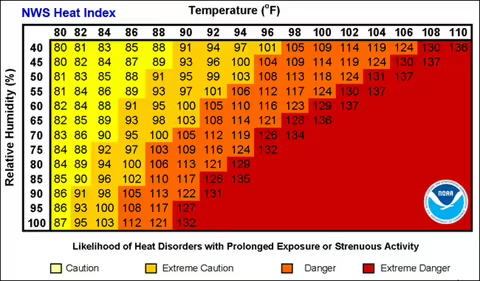The next two weeks will bring scorching temperatures across the state. Though the thermometer may say one thing, humidity can elevate the effects of that temperature.
Weather reports typically provide a "feels like" temperature, known as heat index, which, in the summer, may be higher than the actual temperature. Meteorologist use a combination of the actual temperature and the level of humidity to determine the heat index.
"To cool our bodies, we sweat," says Duane Friend, University of Illinois Extension energy and environment educator. "As the sweat evaporates off our skin, heat is removed, which cools us. When humidity is high, the rate of evaporation decreases. We sweat, but since it’s not evaporating, we don't cool off."
If internal body temperature increase, people may experience heat-related stress, such as heat cramps, heat exhaustion, or life threatening heat stroke. Health professionals recommend people avoid excessive physical activity during times of high heat and humidity and increase their fluid intake.
The National Weather Service has created a chart that shows “feels like” temperatures for high temperatures and humidity, and issues weather alerts when the heat index is expected to exceed 105 for two or more consecutive days. Lower heat index readings still need to be considered if someone will be outside for long periods doing strenuous activity.
Illinois Extension has a series of weather-related videos.
SOURCE: Duane Friend, Energy and Environment Educator, University of Illinois Extension
WRITER: Judy Mae Bingman, Communications Manager, University of Illinois Extension
